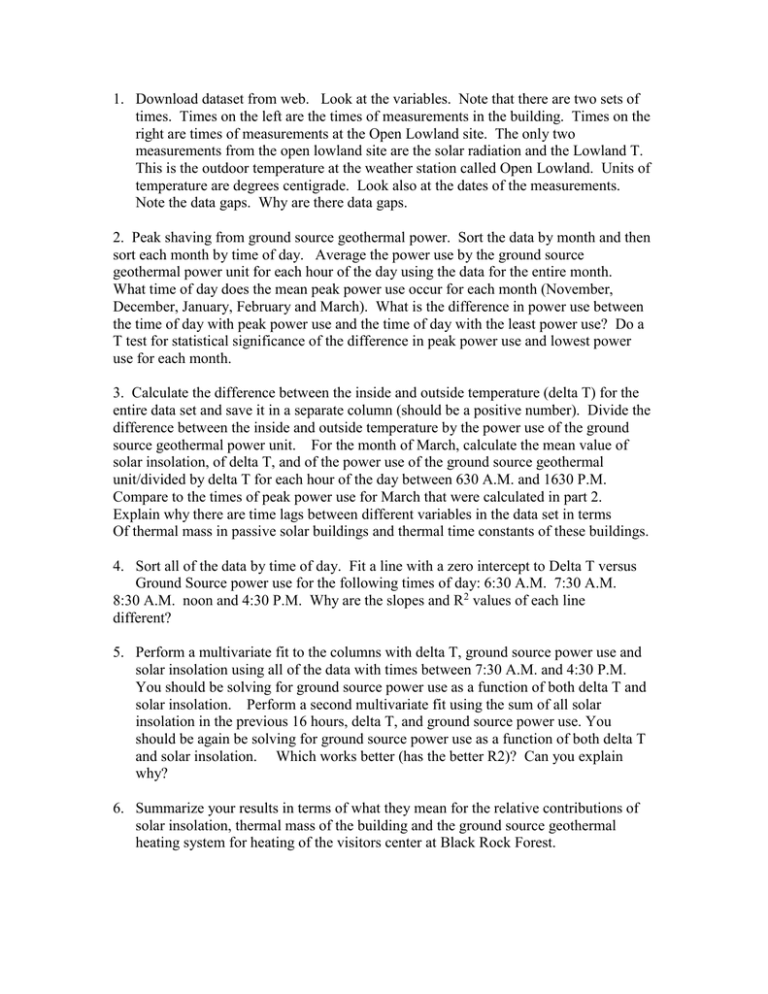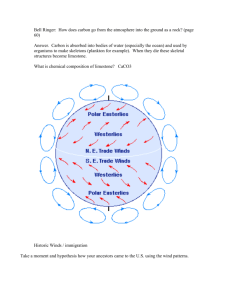1. Download dataset from web. Look at... times. Times on the left are the times of...
advertisement

1. Download dataset from web. Look at the variables. Note that there are two sets of times. Times on the left are the times of measurements in the building. Times on the right are times of measurements at the Open Lowland site. The only two measurements from the open lowland site are the solar radiation and the Lowland T. This is the outdoor temperature at the weather station called Open Lowland. Units of temperature are degrees centigrade. Look also at the dates of the measurements. Note the data gaps. Why are there data gaps. 2. Peak shaving from ground source geothermal power. Sort the data by month and then sort each month by time of day. Average the power use by the ground source geothermal power unit for each hour of the day using the data for the entire month. What time of day does the mean peak power use occur for each month (November, December, January, February and March). What is the difference in power use between the time of day with peak power use and the time of day with the least power use? Do a T test for statistical significance of the difference in peak power use and lowest power use for each month. 3. Calculate the difference between the inside and outside temperature (delta T) for the entire data set and save it in a separate column (should be a positive number). Divide the difference between the inside and outside temperature by the power use of the ground source geothermal power unit. For the month of March, calculate the mean value of solar insolation, of delta T, and of the power use of the ground source geothermal unit/divided by delta T for each hour of the day between 630 A.M. and 1630 P.M. Compare to the times of peak power use for March that were calculated in part 2. Explain why there are time lags between different variables in the data set in terms Of thermal mass in passive solar buildings and thermal time constants of these buildings. 4. Sort all of the data by time of day. Fit a line with a zero intercept to Delta T versus Ground Source power use for the following times of day: 6:30 A.M. 7:30 A.M. 8:30 A.M. noon and 4:30 P.M. Why are the slopes and R2 values of each line different? 5. Perform a multivariate fit to the columns with delta T, ground source power use and solar insolation using all of the data with times between 7:30 A.M. and 4:30 P.M. You should be solving for ground source power use as a function of both delta T and solar insolation. Perform a second multivariate fit using the sum of all solar insolation in the previous 16 hours, delta T, and ground source power use. You should be again be solving for ground source power use as a function of both delta T and solar insolation. Which works better (has the better R2)? Can you explain why? 6. Summarize your results in terms of what they mean for the relative contributions of solar insolation, thermal mass of the building and the ground source geothermal heating system for heating of the visitors center at Black Rock Forest.



